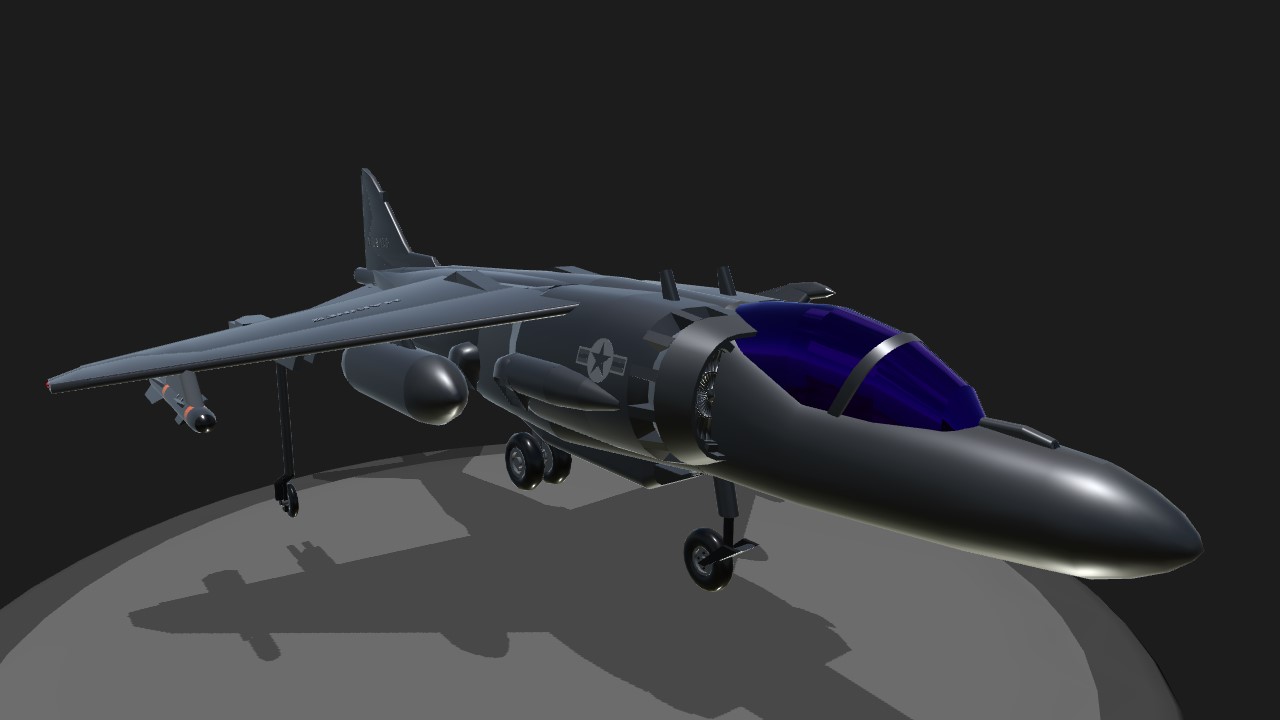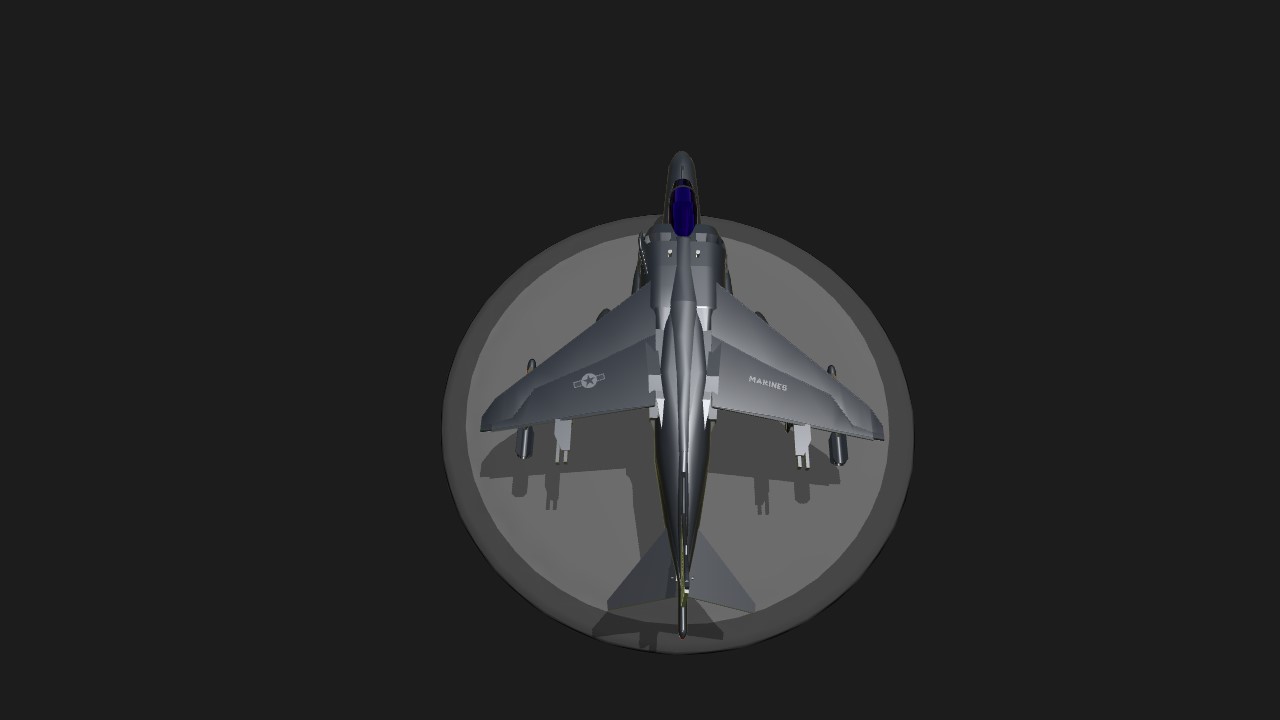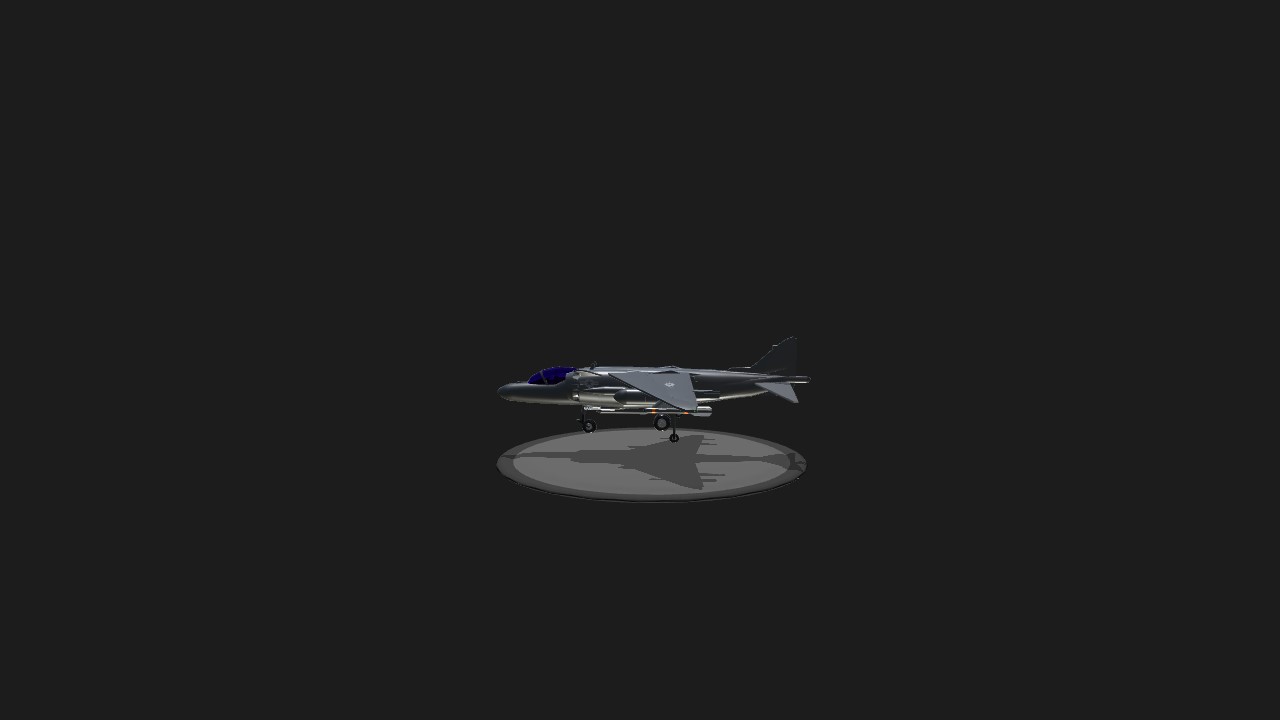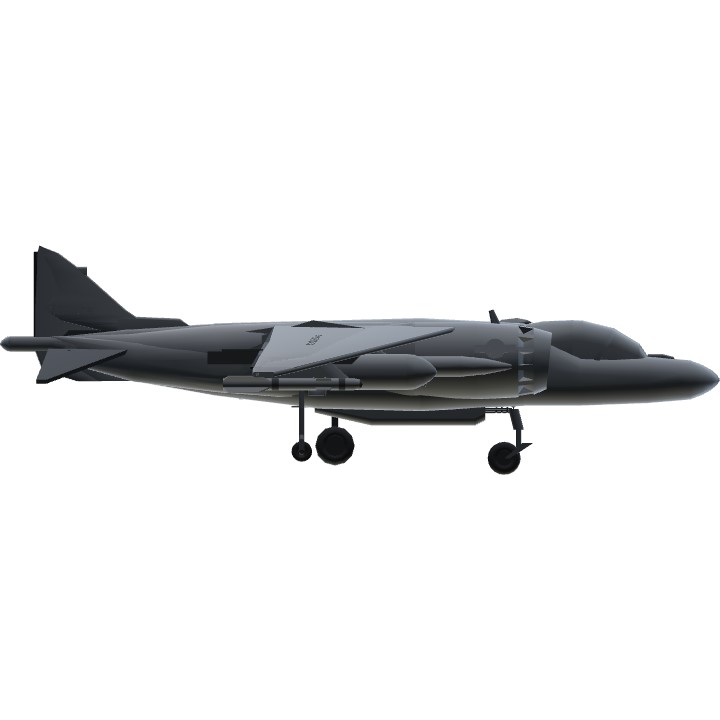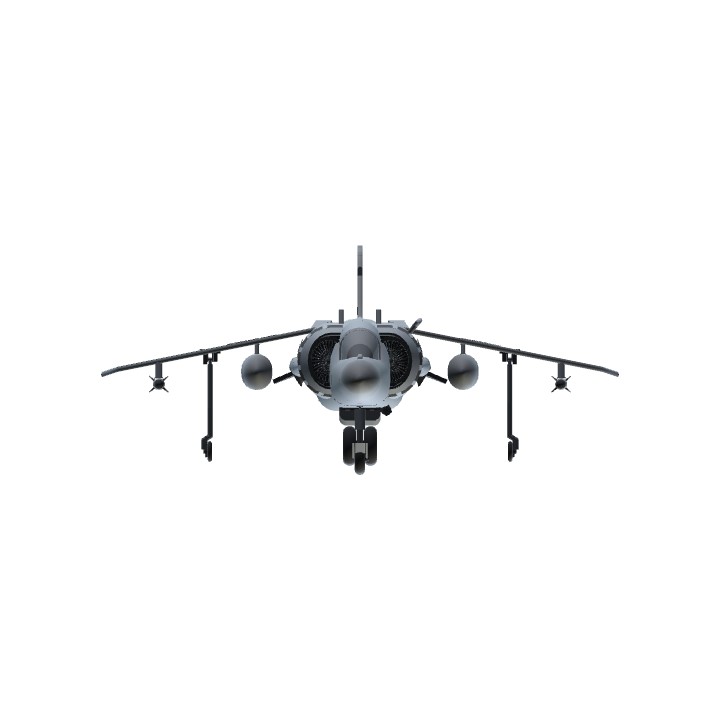Ok so I thought I would fix this things I fixed control surfaces will no longer cut into the landing gear flight is greatly improved
Ok controls are
Ag 1 lights
Ag 2 drop fuel tanks
Ag 3 gyro
Boring history stuff
The AV-8B Harrier II is a subsonic attack aircraft of metal and composite construction that retains the basic layout of the Hawker Siddeley Harrier, with horizontal stabilizers and shoulder-mounted wings featuring prominent anhedral (downward slope). The aircraft is powered by a single Rolls-Royce Pegasus turbofan engine, which has two intakes and four synchronized vectorable nozzles close to its turbine. Two of these nozzles are located near the forward, cold end of the engine and two are near the rear, hot end of the engine. This arrangement contrasts with most fixed-wing aircraft, which have engine nozzles only at the rear. The Harrier II also has smaller valve-controlled nozzles in the nose, tail, and wingtips to provide control at low airspeeds.
The AV-8B is equipped with one centerline fuselage and six wing hardpoints (compared to four wing hardpoints on the original Harrier),[64] along with two fuselage stations for a 25 mm GAU-12 cannon and ammunition pack.These hardpoints give it the ability to carry a total of 9,200 lb (4,200 kg) of weapons, including air-to-air, air-to-surface, and anti-ship missiles, as well as unguided and guided bombs. The aircraft's internal fuel capacity is 7,500 lb (3,400 kg), up 50% compared to its predecessor. Fuel capacity can be carried in hardpoint-compatible external drop tanks, which give the aircraft a maximum ferry range of 2,100 mi (3,300 km) and a combat radius of 300 mi (556 km). The AV-8B can also receive additional fuel via aerial refueling using the probe-and-drogue system. The British Aerospace Harrier II, a variant tailored to the RAF, uses different avionics and has one additional missile pylon on each wing.
The Harrier II retains the tandem landing gear layout of the first-generation Harriers, although each outrigger landing gear leg was moved from the wingtip to mid-span for a tighter turning radius when taxiing. The engine intakes are larger than those of the first-generation Harrier and have a revised inlet. On the underside of the fuselage, McDonnell Douglas added lift-improvement devices, which capture the reflected engine exhaust when close to the ground, giving the equivalent of up to 1,200 lb (544 kg) of extra lift.
The technological advances incorporated into the Harrier II, compared with the original Harrier, significantly reduce the workload on the pilot. The supercritical wing, hands-on-throttle-and-stick (HOTAS) control principle, and increased engineered lateral stability make the aircraft fundamentally easier to fly.Ed Harper, general manager for the McDonnell Douglas Harrier II development program, summarizes: "The AV-8B looks a lot like the original Harrier and it uses the same operating fundamentals. It just uses them a lot better".A large cathode-ray tube multi-purpose display, taken from the F/A-18, makes up much of the instrument panel in the cockpit. It has a wide range of functions, including radar warning information and weapon delivery checklist.The pilots sit on UPC/Stencel 10B zero-zero ejection seats, meaning that they are able to eject from a stationary aircraft at zero altitude.
Specifications
General Characteristics
- Created On iOS
- Wingspan 41.1ft (12.5m)
- Length 57.2ft (17.4m)
- Height 18.2ft (5.5m)
- Empty Weight 18,767lbs (8,512kg)
- Loaded Weight 23,938lbs (10,858kg)
Performance
- Power/Weight Ratio 2.816
- Wing Loading 35.6lbs/ft2 (173.6kg/m2)
- Wing Area 673.3ft2 (62.5m2)
- Drag Points 11186
Parts
- Number of Parts 299
- Control Surfaces 5
- Performance Cost 1,028

